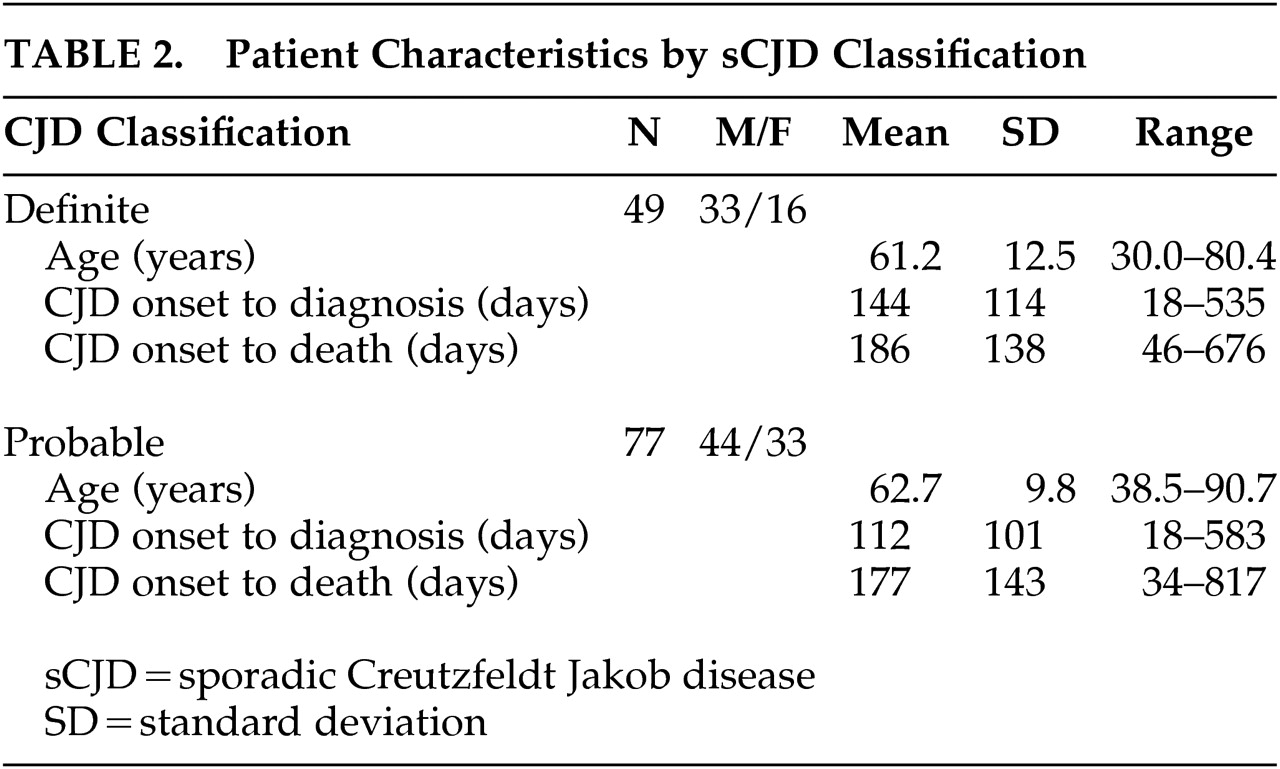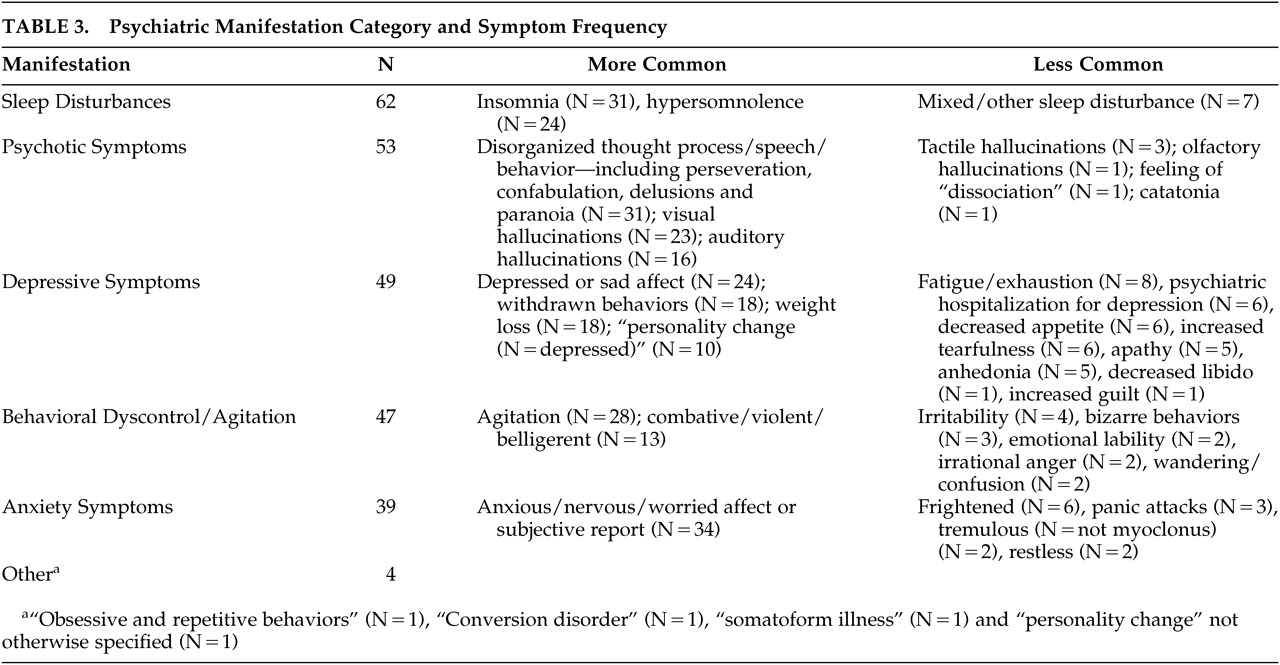Psychiatric Manifestations of Creutzfeldt-Jakob Disease: A 25-Year Analysis
Abstract
METHOD
Subjects
Inclusion Criteria
Exclusion Criteria
Data Collection
RESULTS
Subjects
Psychiatric Manifestations
Timing of Psychiatric Manifestations
Medication
DISCUSSION
Sleep Disturbances During CJD Course
Psychotic Symptoms During CJD Course
Depression During CJD Course
Anxiety During the CJD Course
Behavioral Dyscontrol and Agitation During CJD Course
Limitations
CONCLUSIONS





References
Information & Authors
Information
Published In
History
Authors
Metrics & Citations
Metrics
Citations
Export Citations
If you have the appropriate software installed, you can download article citation data to the citation manager of your choice. Simply select your manager software from the list below and click Download.
For more information or tips please see 'Downloading to a citation manager' in the Help menu.
View Options
View options
PDF/EPUB
View PDF/EPUBGet Access
Login options
Already a subscriber? Access your subscription through your login credentials or your institution for full access to this article.
Personal login Institutional Login Open Athens loginNot a subscriber?
PsychiatryOnline subscription options offer access to the DSM-5-TR® library, books, journals, CME, and patient resources. This all-in-one virtual library provides psychiatrists and mental health professionals with key resources for diagnosis, treatment, research, and professional development.
Need more help? PsychiatryOnline Customer Service may be reached by emailing [email protected] or by calling 800-368-5777 (in the U.S.) or 703-907-7322 (outside the U.S.).

